July 31, 2016
Martha O'Kennon

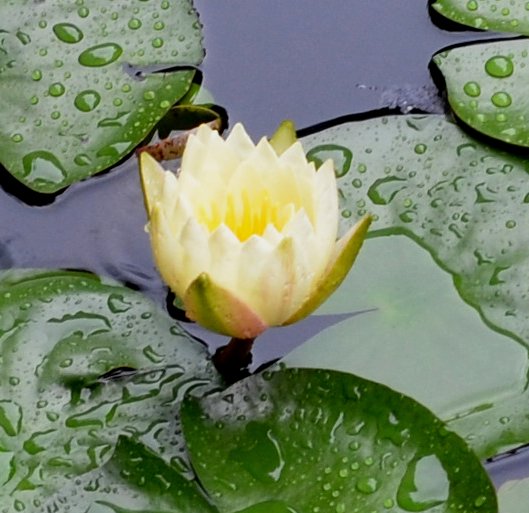
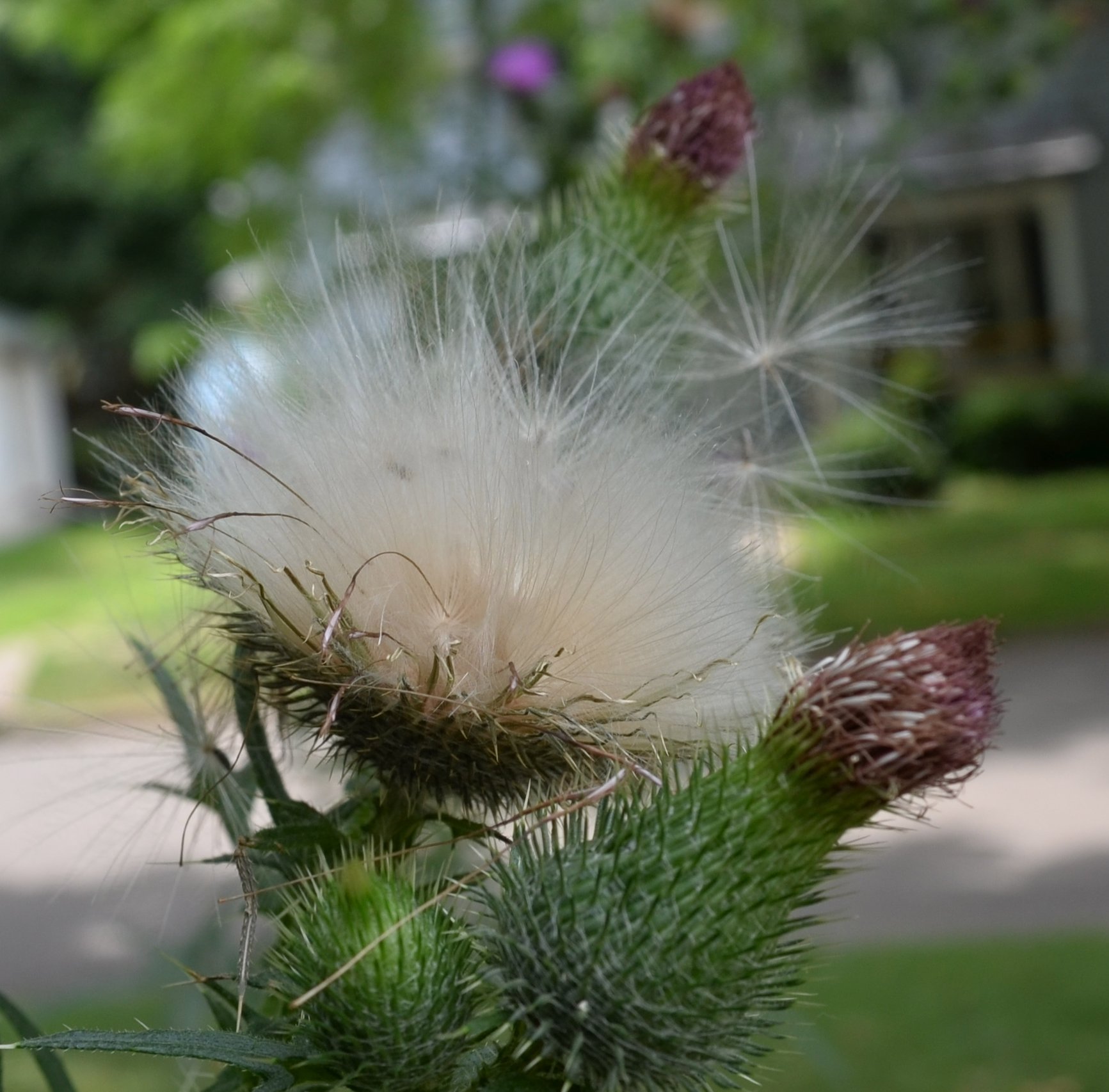
It's now been a month or more of hot humid weather. I've been seriously affected by the action of the humidity on my asthma. But I still get out there each day to see what's going on. Many bugs seem to be doing the same as me - hiding out in whatever shade they can find. But I still have gotten quite a few of them and so here goes. Above: waterlilies and the first exploded thistle head.
Remember that there is information in the name of the file for each image. You can see it by mousing over the image - look at the lower left of the screen.
I would try clicking on the image. If the little "+" sign appears, it means you can enlarge again. While it is in "+" mode, click on something you want to see more clearly and it will zoom to that section. Then the info is displayed in the address line above. If the image has been cropped
so that clicking on it doesn't result in a larger picture, you can always hit control-plus to increase the size of the image.
Starting alphabetically at ants, This first one is probably genus Camponotus. We've seen them almost all summer so far. But this week I found one gynormous winged member of the Formica genus. (So why is my counter-top made of ants? Something to do with formic acid, which gives ants their sour taste - in case you've tried one - I haven't yet) Have you ever seen such an abdomen? She looks as if she will explode but she will probably do that underground - explode eggs! This little grey bee almost looks blue.
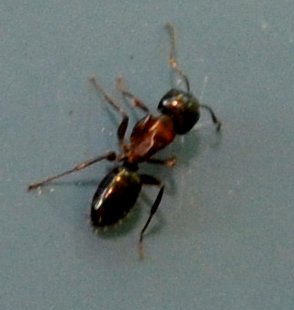
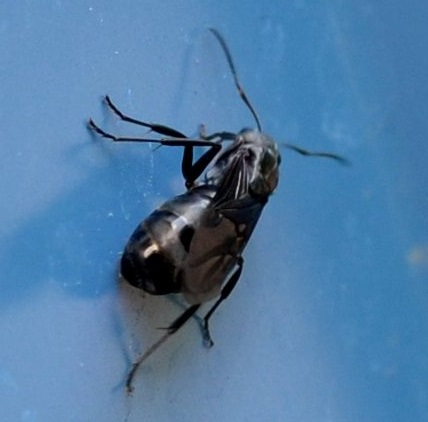
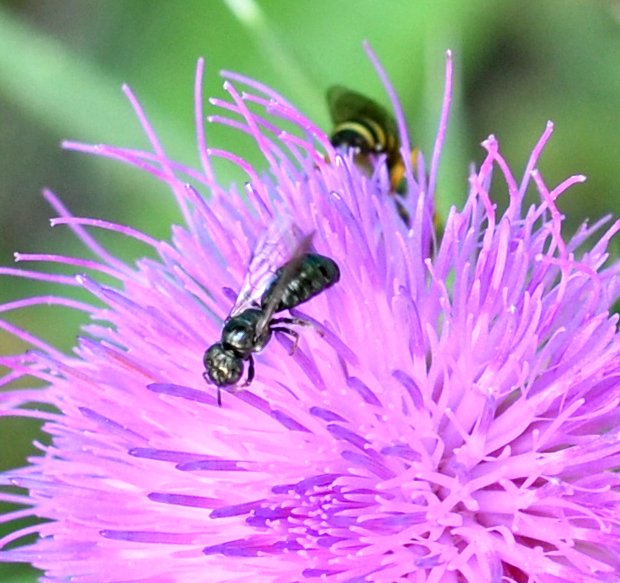
Thanks to the thistles, it was a good week for bees, even if I can't quite identify most of them accurately! Here is a smallish bumble bee, an unidentified goldish bee, and a mason bee.
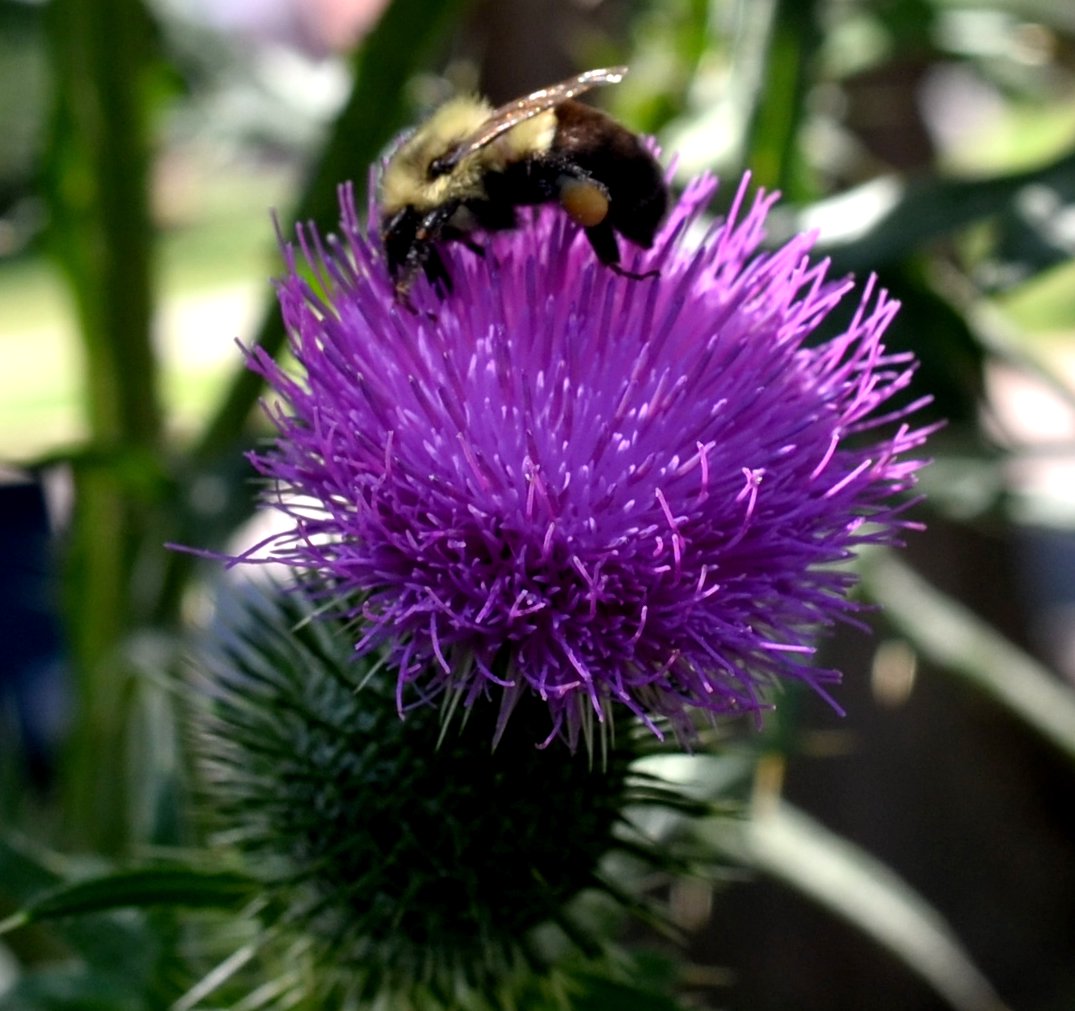
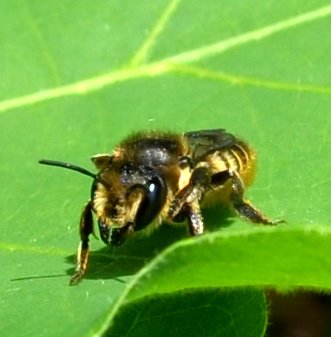
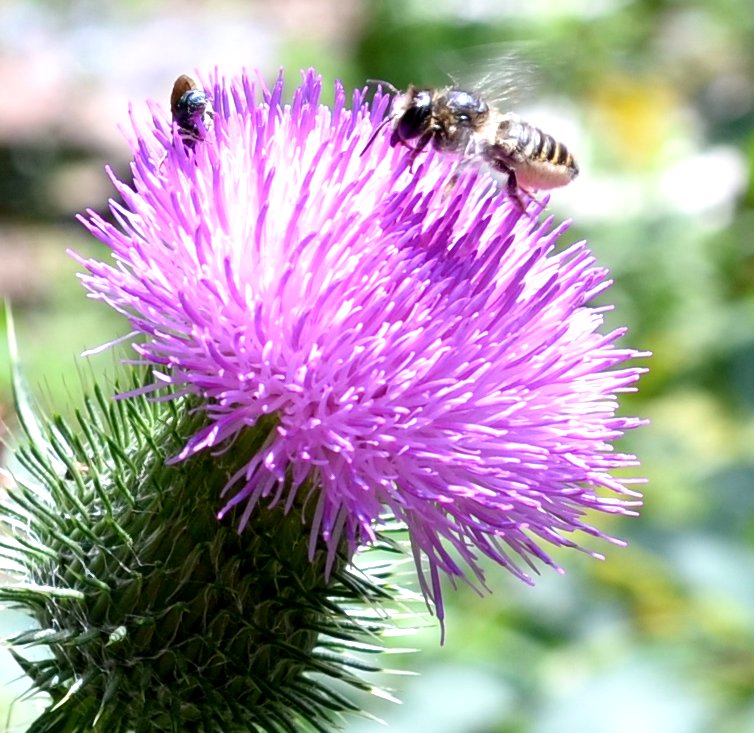
Here are a mysterious bee left hanging up by some spider, and a couple of green metallic bees. I seem to recall that the one in the striped pants is the male, but that depends on the species. The last little fellow is covered with bright red Tiger Lily pollen, which rubs off onto anyone or anything that brushes up against it.
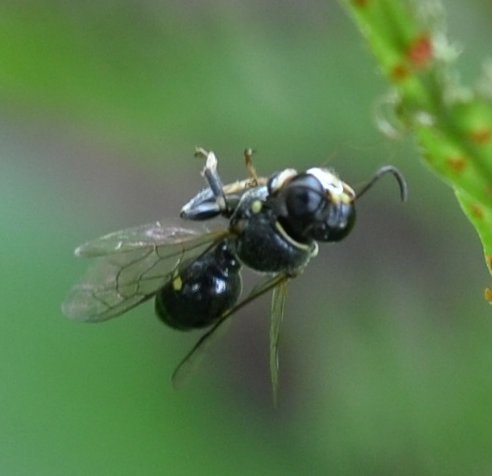
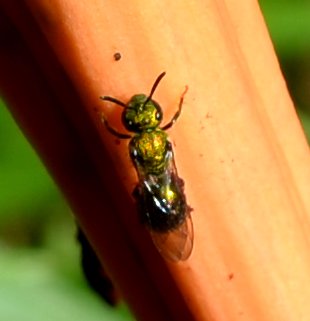
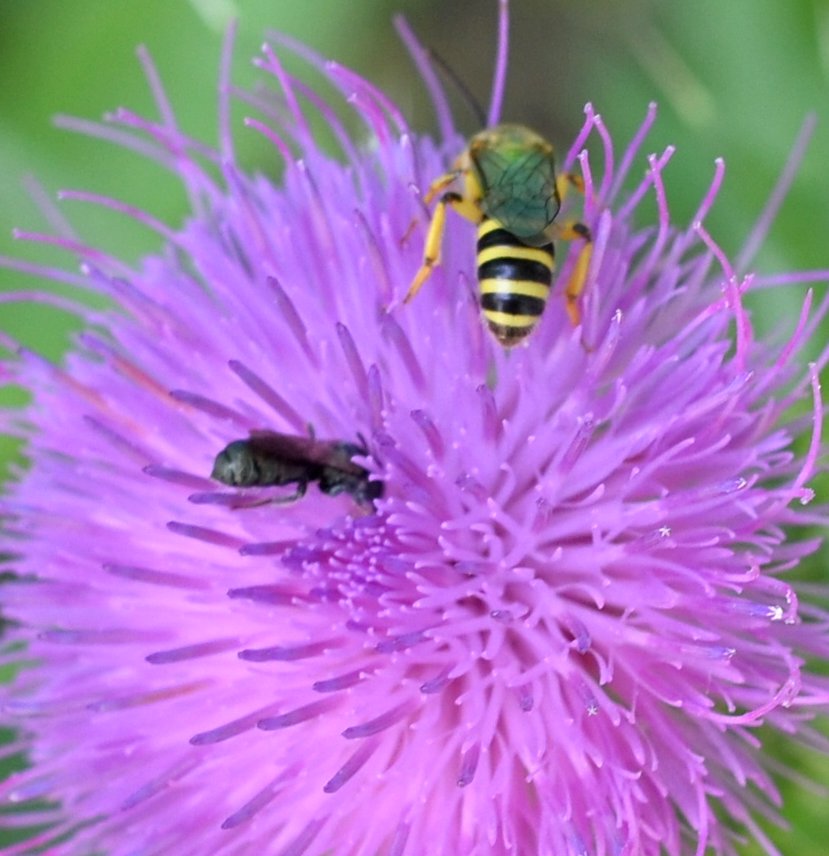
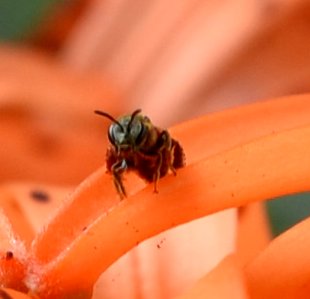
The beetles were varied and mostly pretty. This brassy fellow has been around for a while. But this click beetle with the maroon head and thorax and blue-black abdomen, Parallelostethus attenuatus, hasn't been spotted here until now. The grey one is new to me too.
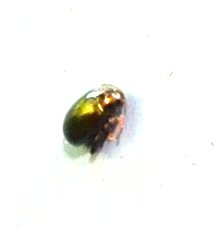
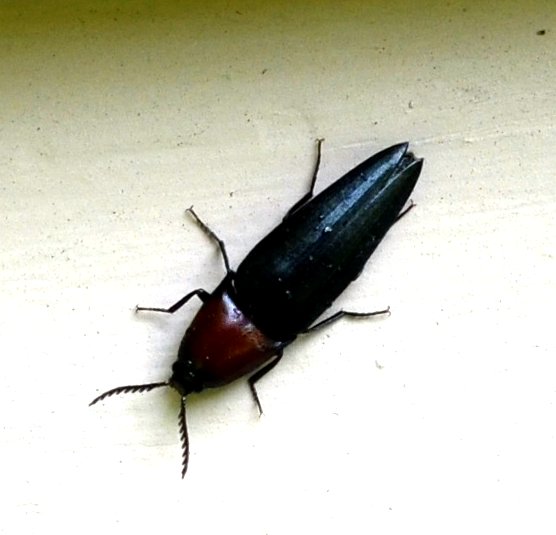
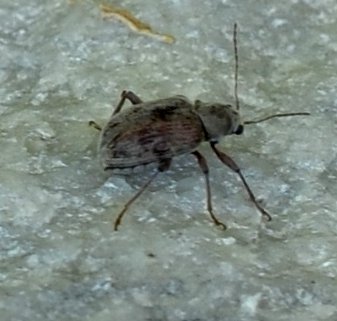
Is this pinkish beetle the same as the grey one above? The second one we all know by heart now, don't we? Just in case, it is the very destructive but very lovely lily leaf beetle. Same for the lovely but vicious Three-lined Potato Beetle!
.jpg)
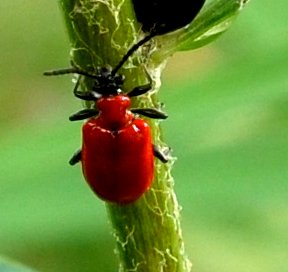
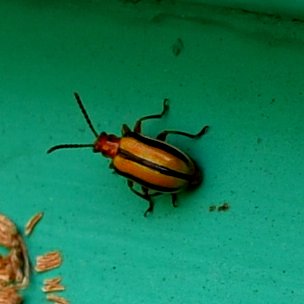
Here are three variations of the asian multicolored lady beetle. Note: the color and number of spots doesn't change the fact that these are all related. It's the "W" or "M" on the face plate that determines the name.
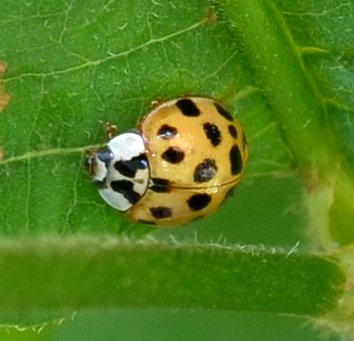
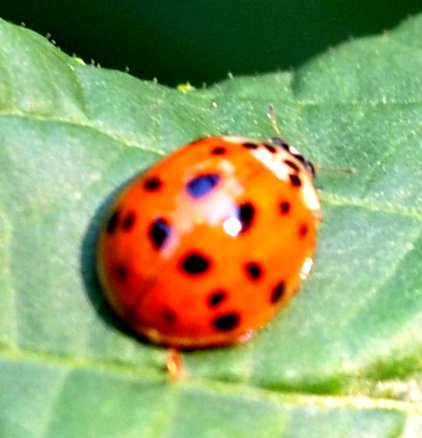
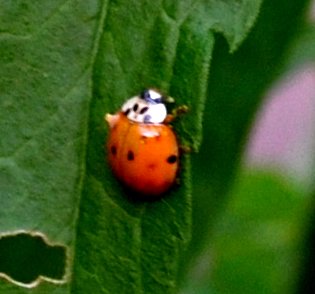
Here is the polished lady beetle - note its exotic face-plate. Then two weevils which we have already seen before.
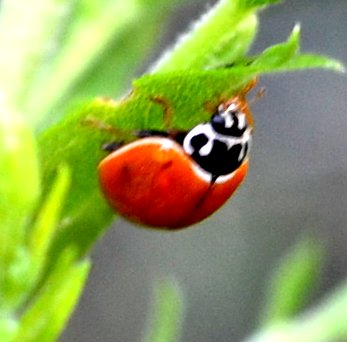

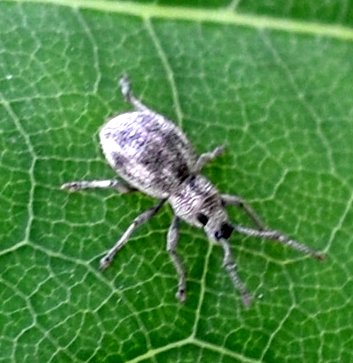
To the Bugs! Here is your Assassin, Zelus luridus, a very young one. Then an adult Acanthocephala terminalis, the Leaf-footed Bug whose nymph once wore a bright blue tutu. Then some kind of Plant Bug.
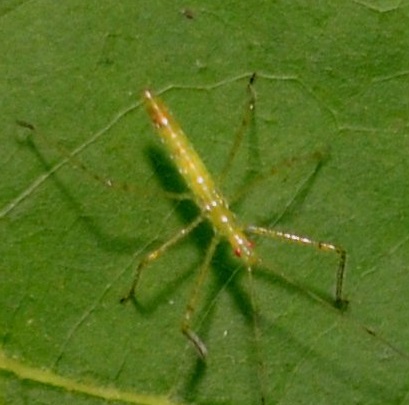
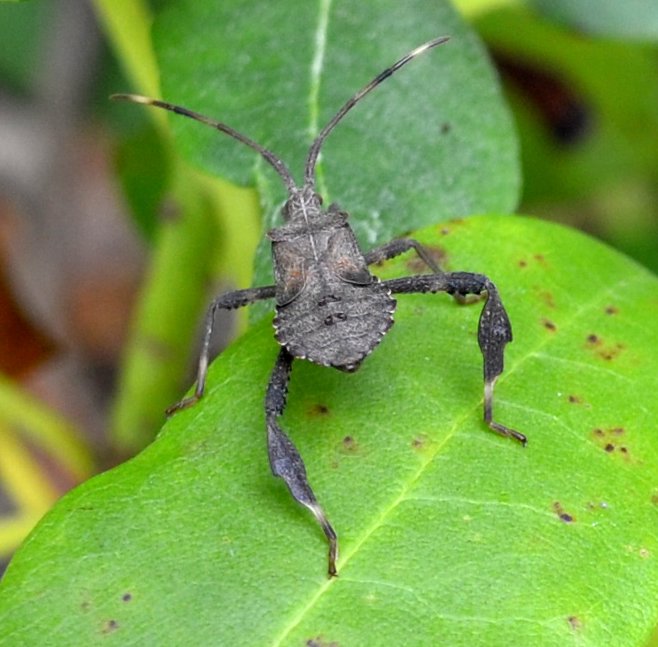
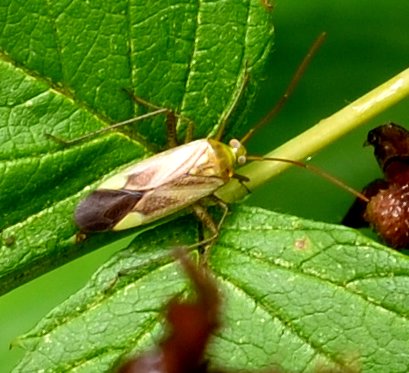
Here we go to the Leafhoppers. From the Japanese leafhopper to the Japanese Maple leafhopper (note these two Leafhoppers aren't really related very closely). Third may be in one of my favorite Leafhopper genera: Scaphoideus.
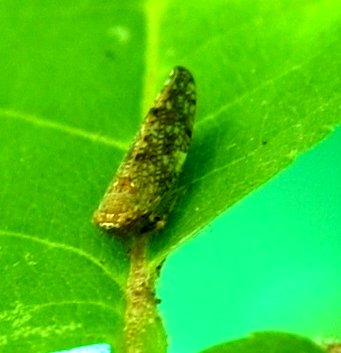
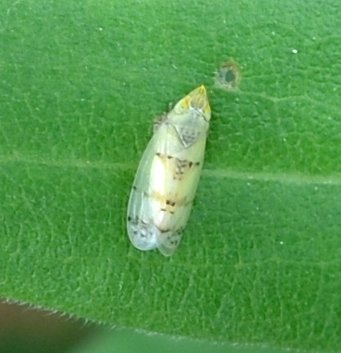
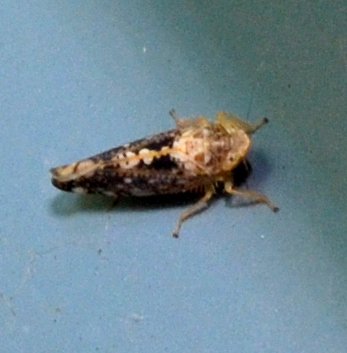
First, a nymph of Jikradia (the new Coelidia) olitoria. Then an adult.
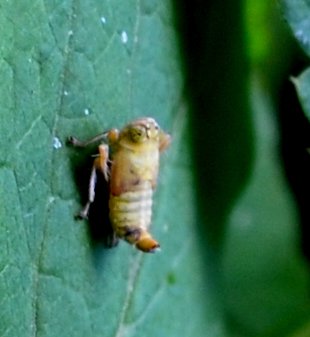
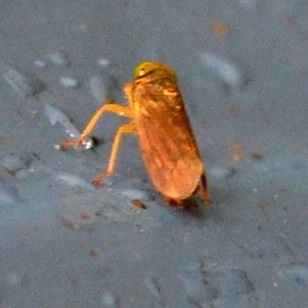

A Candy-striper; A sharp coneheaded one, probably in genus Aphrodes; Another Conehead.
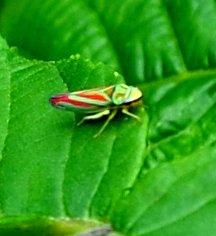
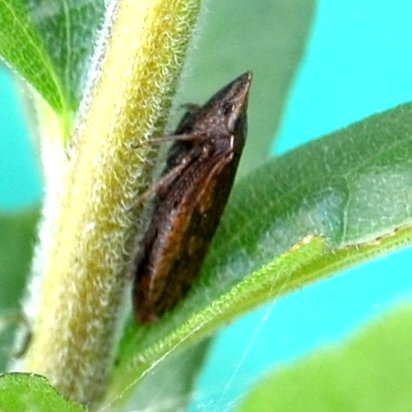
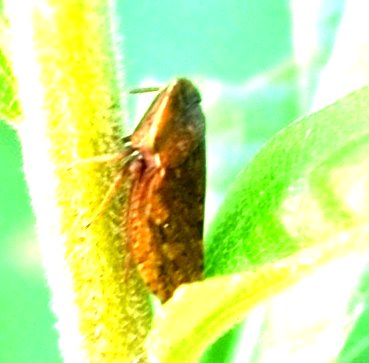
A pretty blue Leafhopper; a green one; probably a different species of green one.
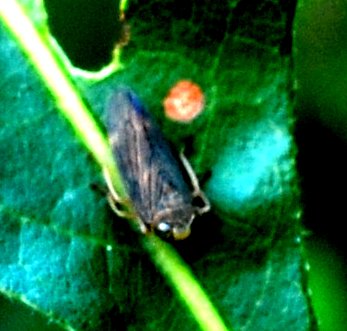
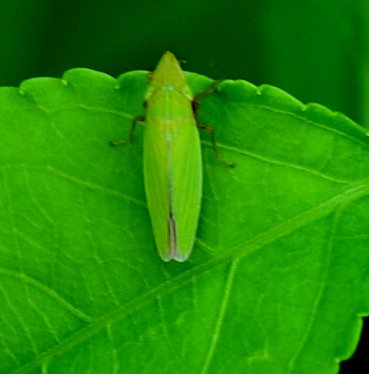
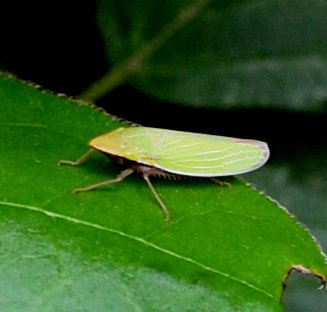
Between the Leafhoppers and the Planthoppers, I like to show the Spittlebugs. First up, the Meadow Spittlebug. Then the male and females of the Alder Spittlebug.
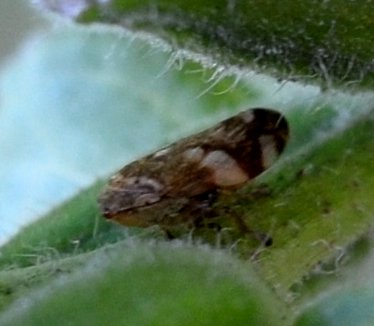
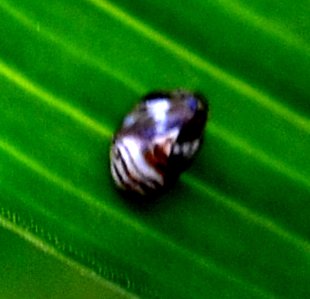
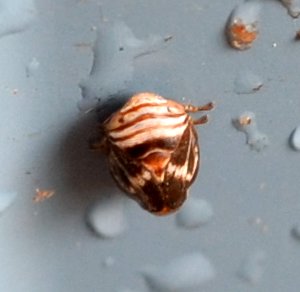
Now for the Planthoppers. This first one is the next step in the metamorphosis from that little tutued bluish black bug nymph to adult Acanthocephala terminalis. This is the first time I've seen this lime-green Planthopper. It is Acanalonia conica. The other Planthopper for the week is Thionia bullata - remember the nymph that I thought was a stage of the Candy-stripe Leafhopper? This is it all grown up. Third is one of the many color variations of the Adult Thionia bullata.
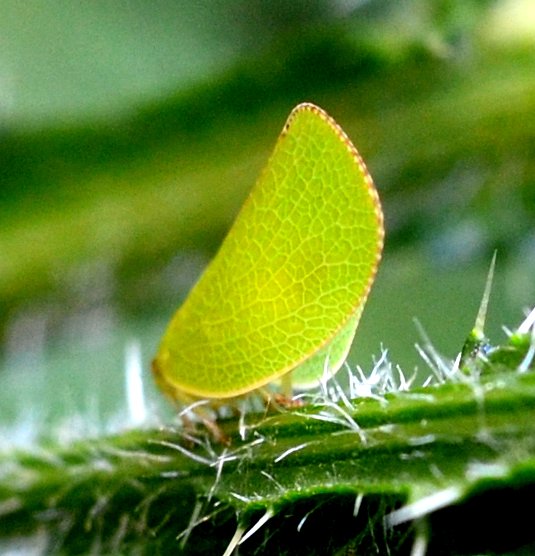
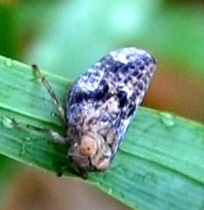
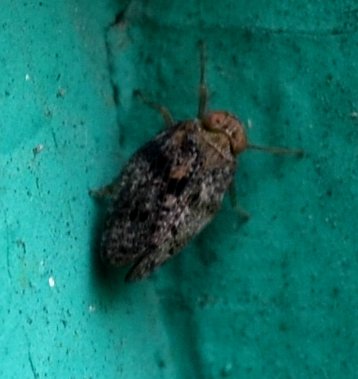
To the Treehoppers! The two-mark treehopper is moving across the garden to each redbud it finds: here it is on a sapling. This whitish thing is its egg. And now the green buffalo treehoppers are being seen more and more. Here are two different kinds. I notice that if I am wearing an orange t-shirt they will hop onto that shirt.
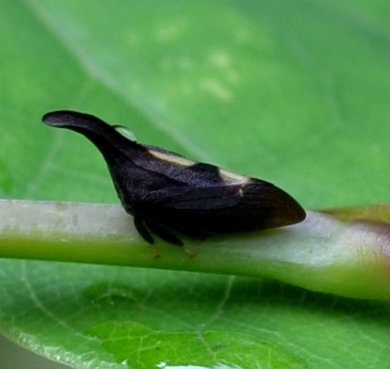
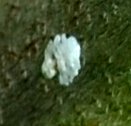
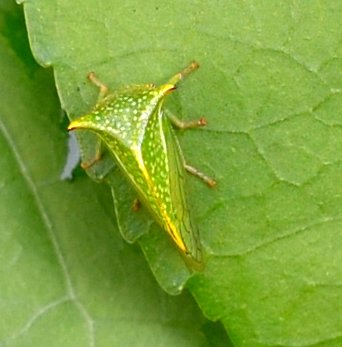
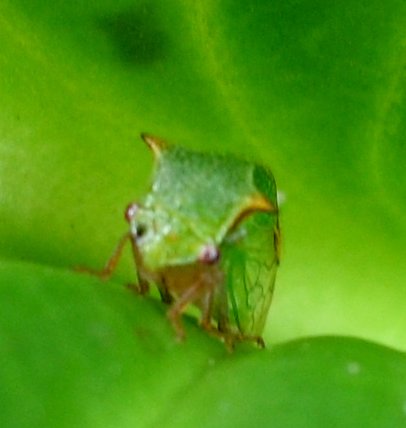
Here are two Stink Bugs. I think the first is the nymph of the Green Stink Bug.
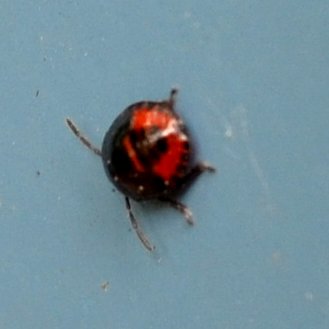
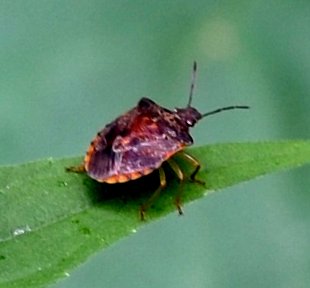
These smaller autumn meadowhawks are still visiting. This one is a female - note her fattish tum just below the waist and the little pointed "tailrest" at the end of the tail.And this week we were also visited by a male white skimmer. Remember that their females have no white and so are very easily missed if they settle onto any brownish brush.
This nest was made in a corner of the porch. Now whenever the mother bird startles when I come to the door, the baby birds go crazy with chirping. I suppose she knows by now that I won't hurt her or touch her nest, but it is a good opportunity to go hunting bugs! Disclaimer: this photo was taken from the other end of the porch and was in serious shadow, but I hope you can still see a hint of a mother bird with her head up!
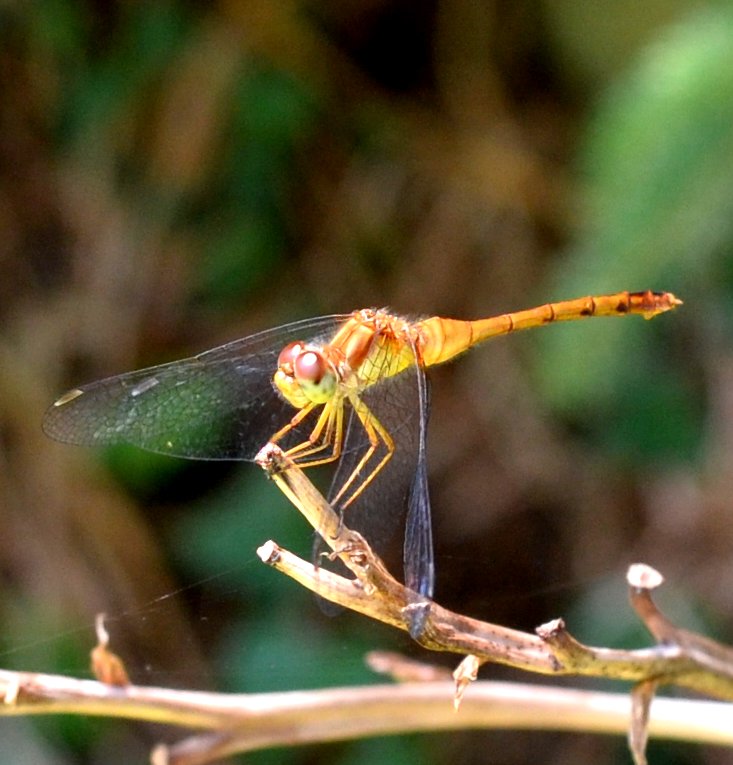
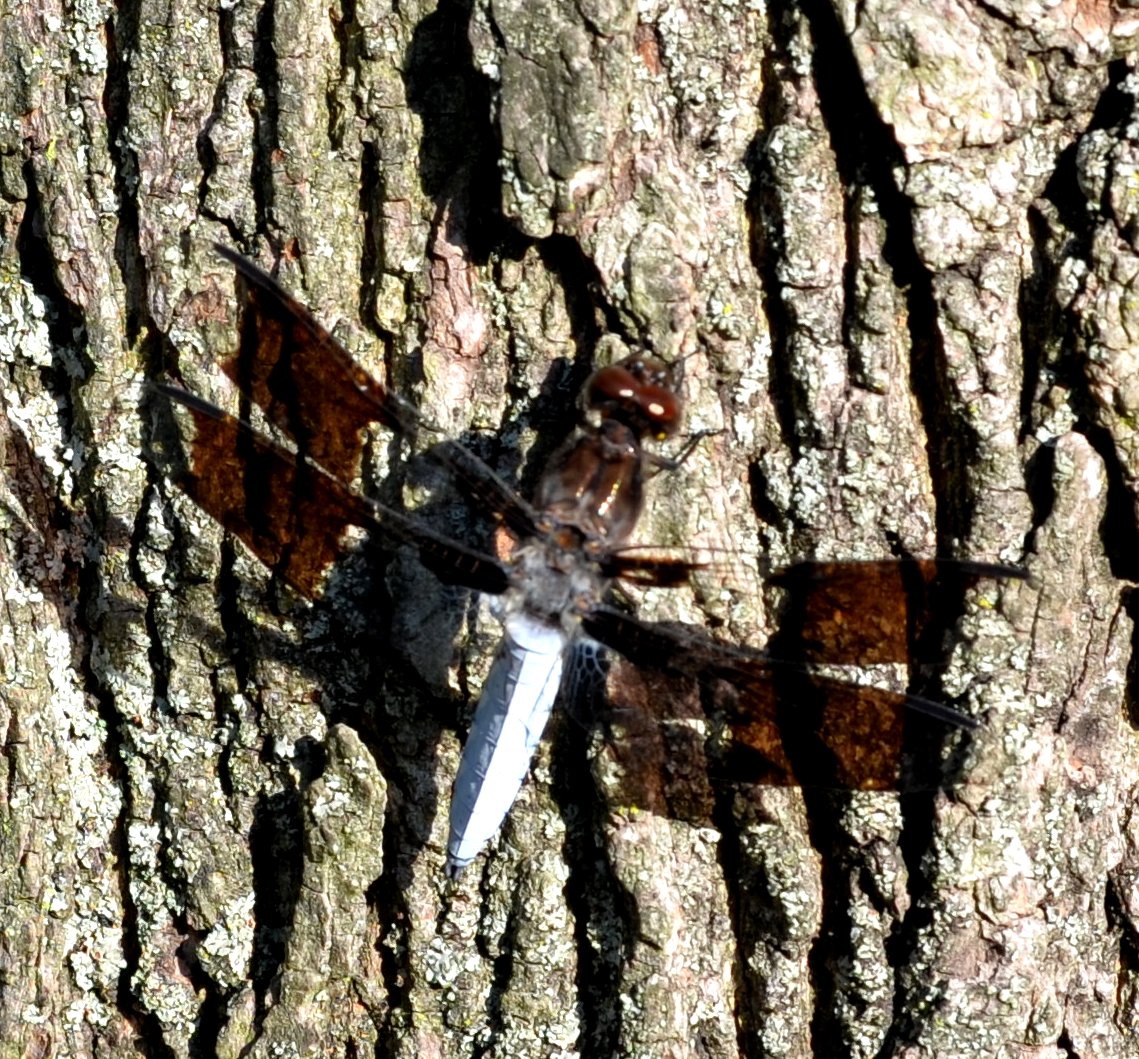
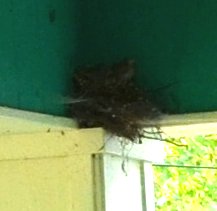
We did pretty well for flies this week. Here's one of those metallic green ones saying "Howdy". This smallish fly has cutout wings that sort of look as if it can glide on them. I've been stalking this last one for days - is it a hoverfly or a wasp? I'm beginning to think it's a wasp,it is just so people averse.
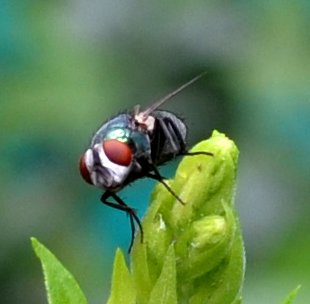
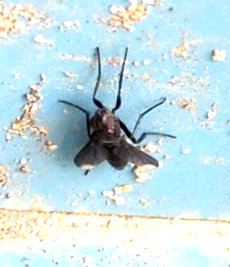
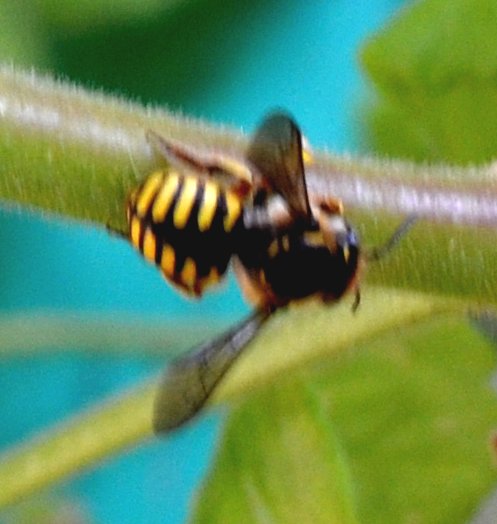
This skinny Minnie is the only new crane fly I've seen this week. But the little long-legged flies have been brilliant.
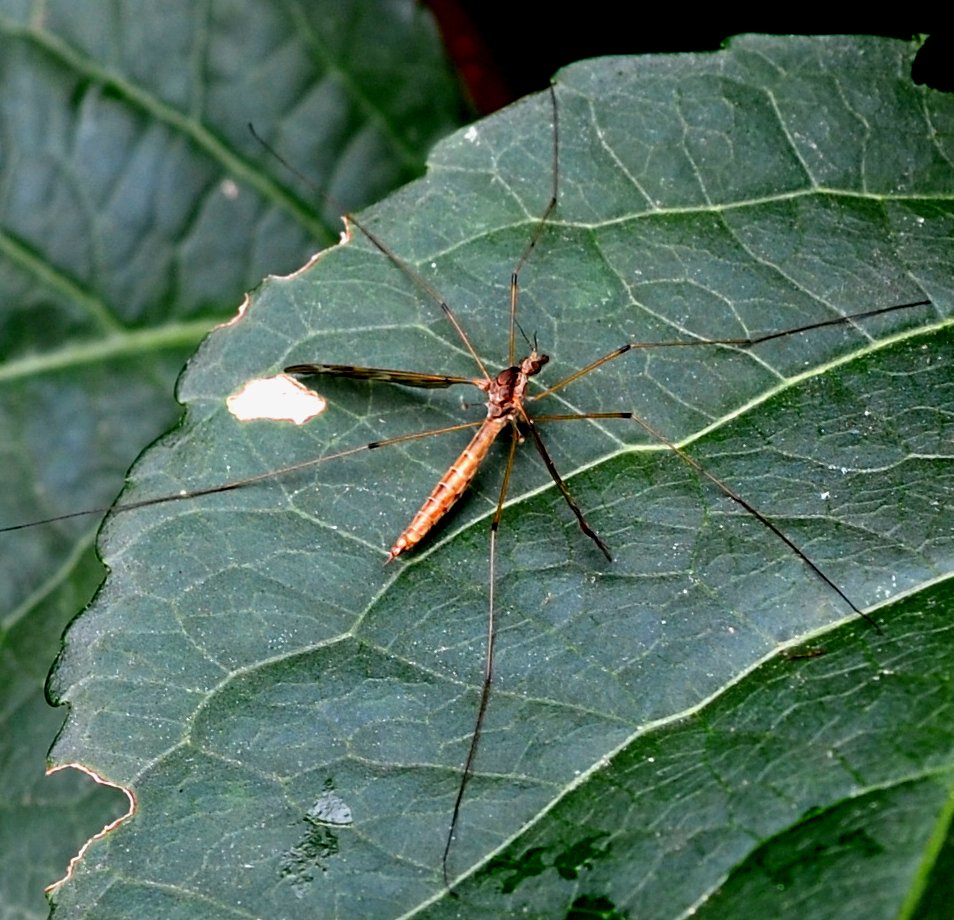
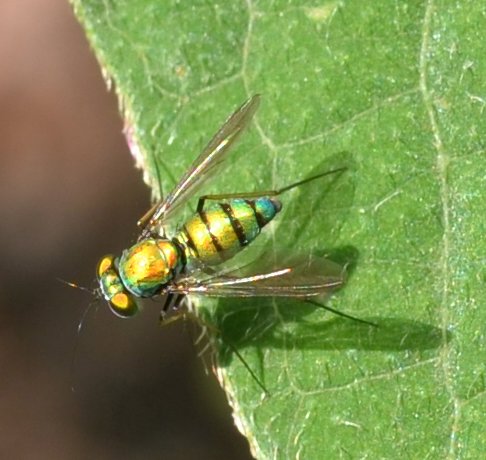
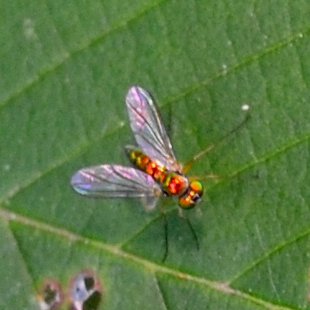
The robber flies were extremely busy. The second one has nabbed a large green metallic fly. And the sarcophagus is actually eating flesh, as its name implies.
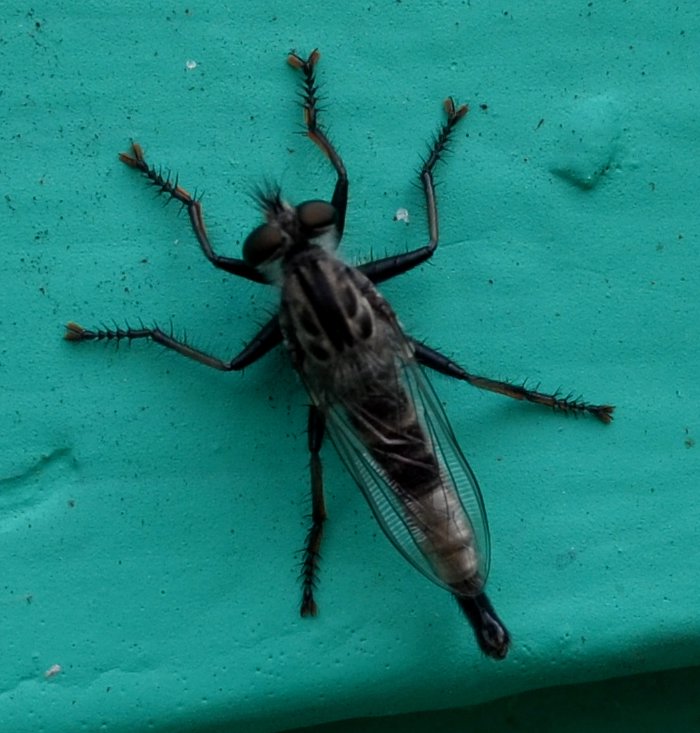
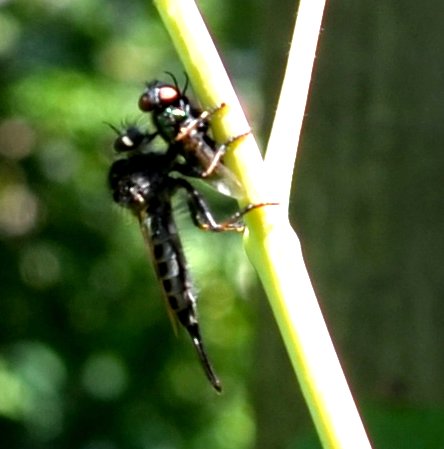
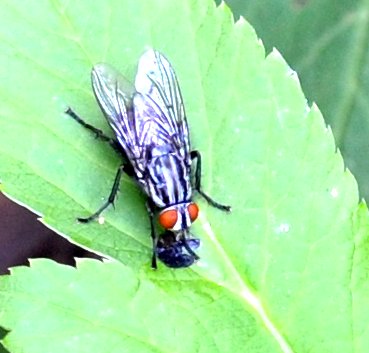
I couldn't tell if this is a horsefly or a hoverfly mimicking one. (Private opinion: it's a horsefly.) This
signal fly was hiding under a leaf. I tell you, I think it is the brutal heat that is driving things to hiding
places. Oh no, we have run out of flies. I'll make it up to you with this little former tadpole. Anyway, I
keep almost stepping on one of them. Almost every day there is one afoot. (It's a baby American toad. From one of the big toad orgies earlier in the summer!)
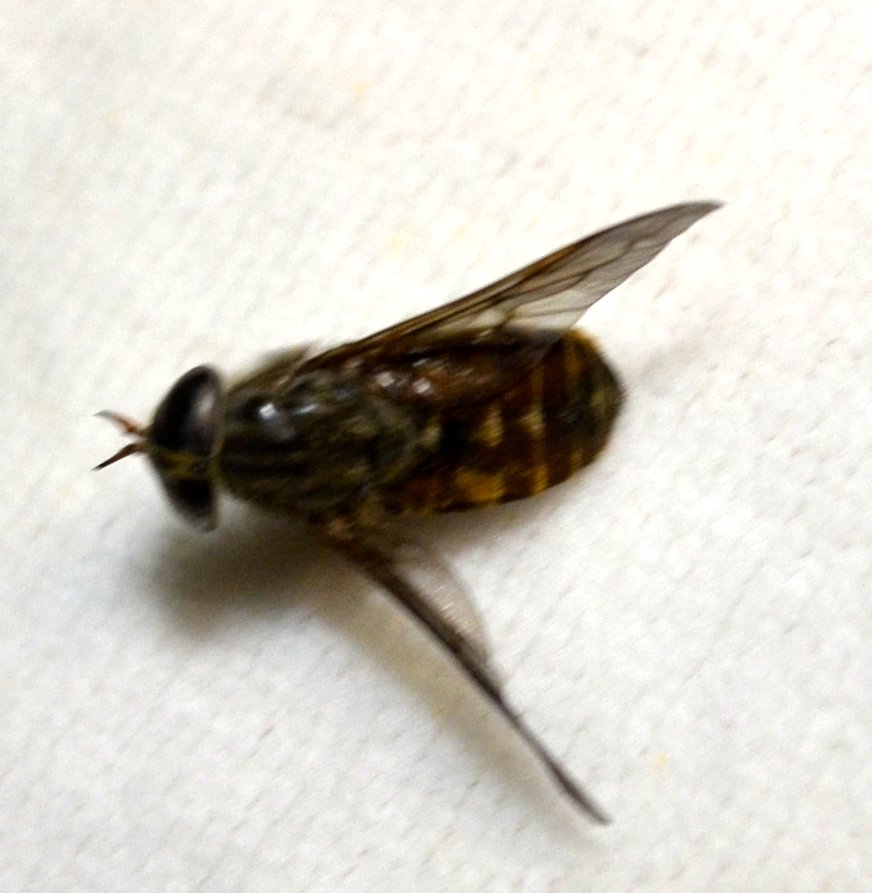
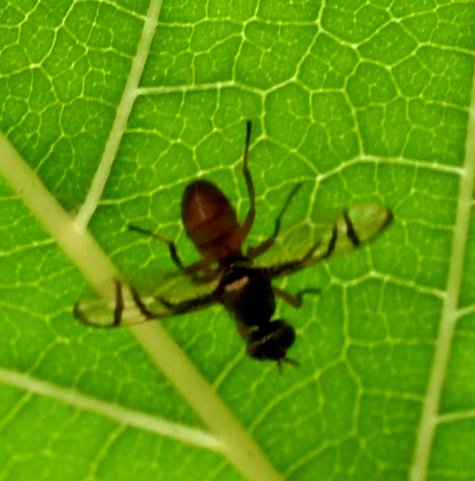
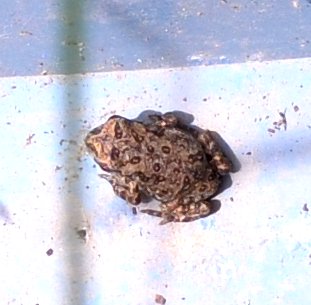
The harvestmen are really in their prime right now. I'm trying to learn a few names. Each species seems to harbor many color variations. Most of them are still unnamed, but I'm working on it. Next is Phanlangium opilio. And then Leiobunum verrucosum.
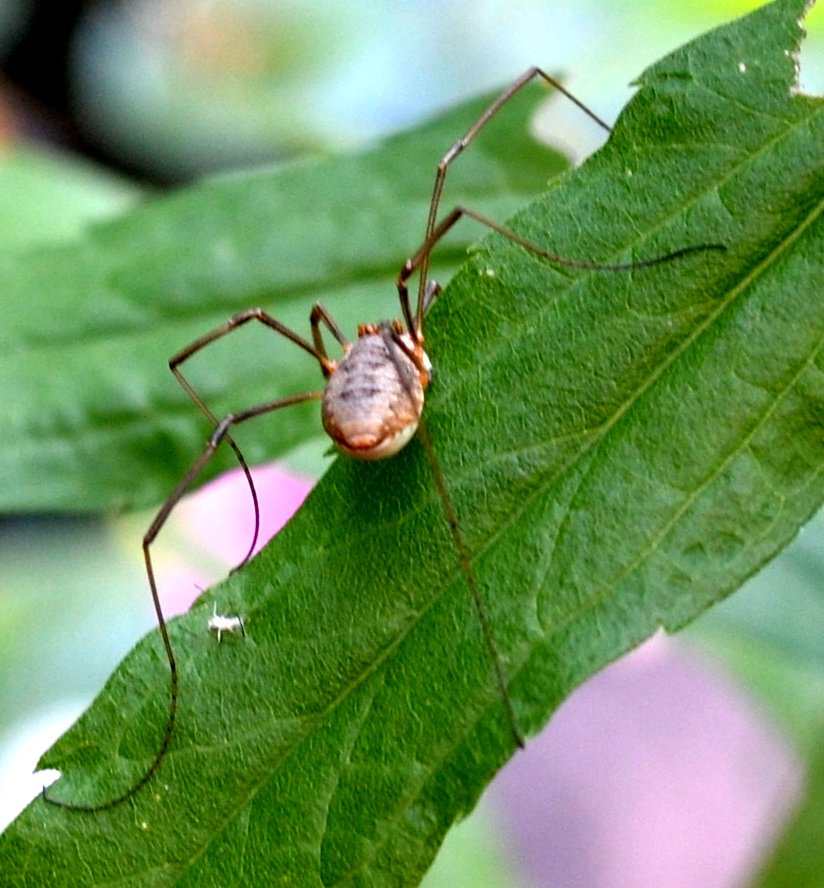
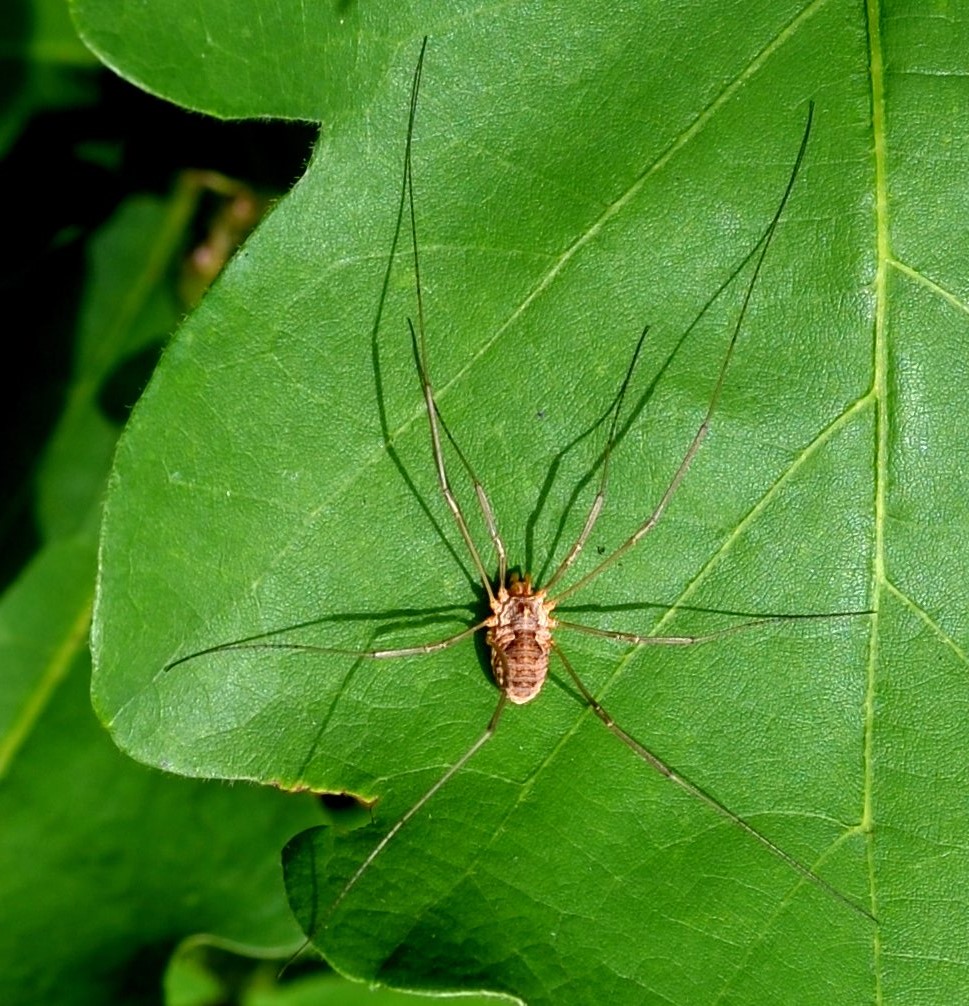
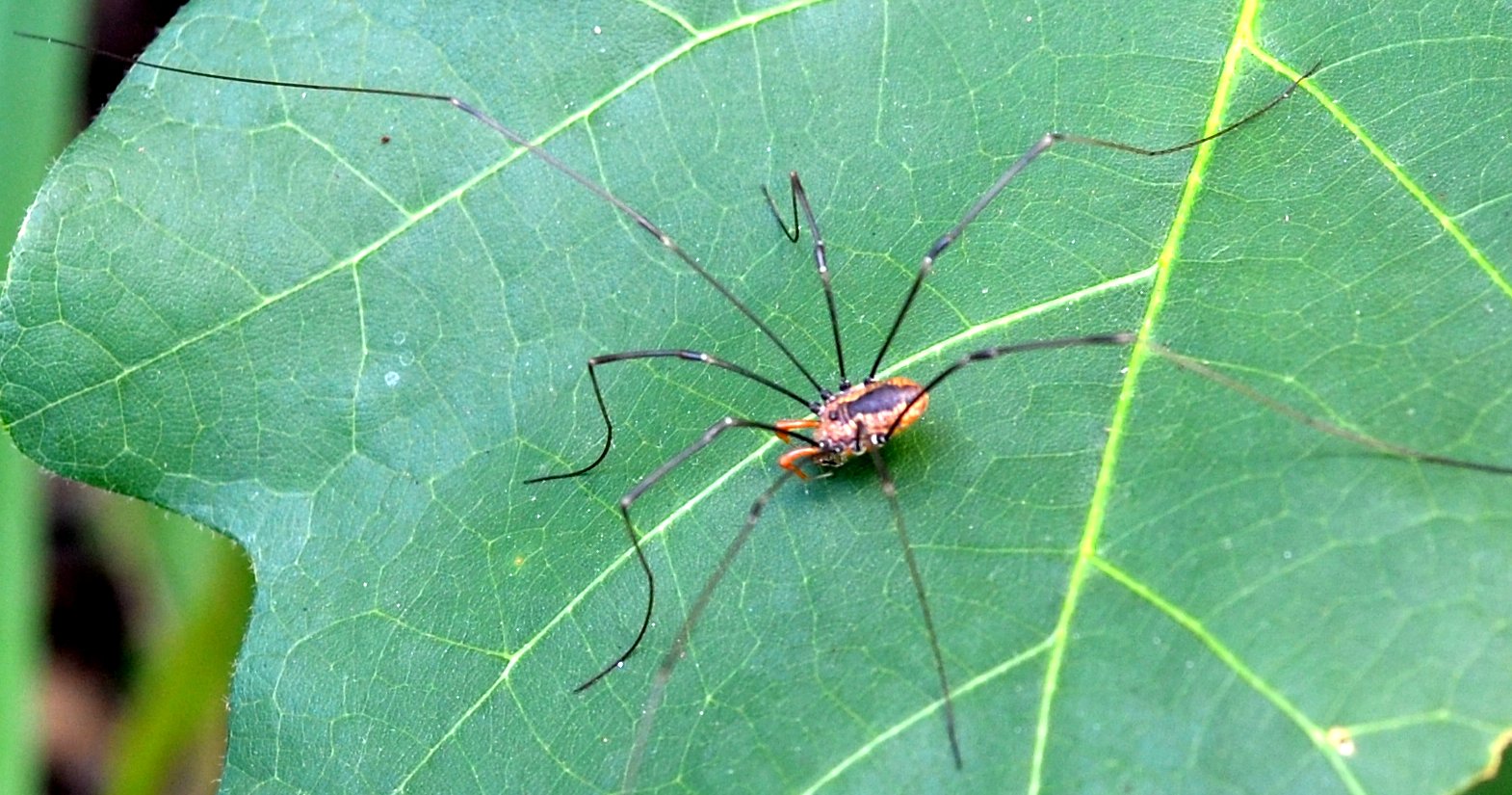
I could have done a much better job getting moths, but they seem to hide underfoot and then fly just out of reach. Still we did see quite a number of them and also butterflies and one skipper. This first moth was one of the larger and prettier of them. The others were much smaller but still interesting.

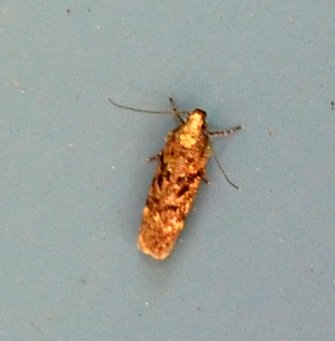
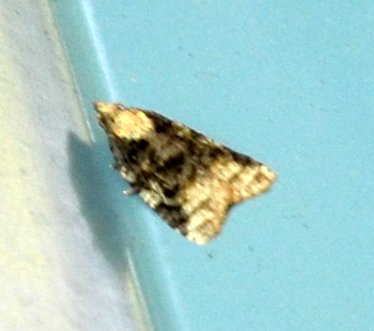
These next two were small and not too easily described (except for "white"). But this skipper (family Hesperidae) was quite pretty and let me get several shots of it.
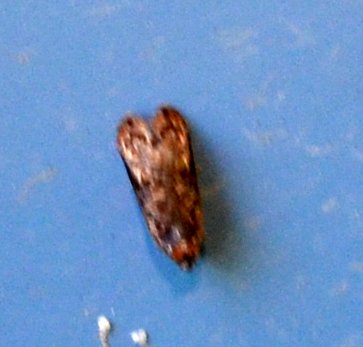
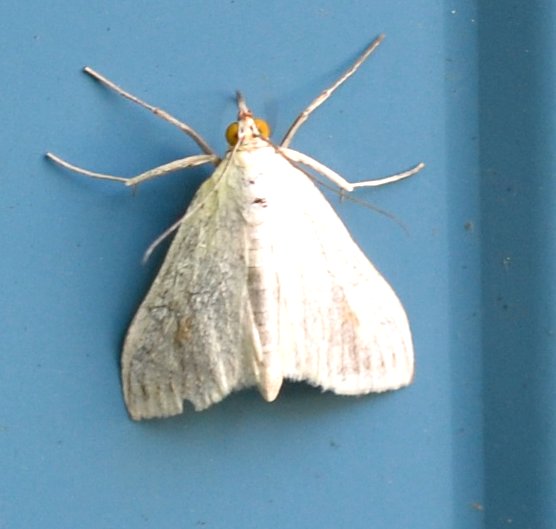
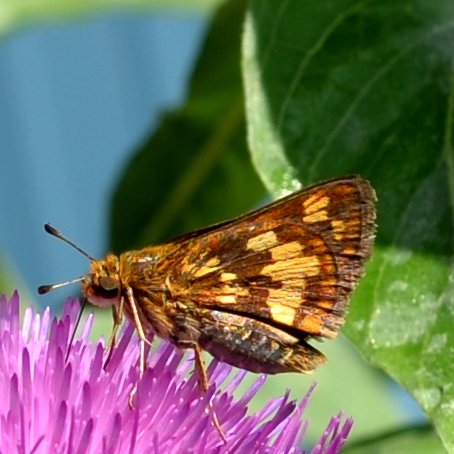
Usually a banded hairstreak comes and sits on whatever is next to the front sidewalk, just past the stairs to the sidewalk. This year we got a badly banged-up striped hairstreak. They aren't an easy pair to distinguish and I was so sure it would be the usual banded, but guess what! The next one is also from a group called "blues" which are also hard to separate, but this seems to be the summer azure. That's it for the butterflies, but two or three count as a good week now, as most of the flowering plants have long scary throats (the trumpetvine) or otherwise don't attract butterflies while I'm afoot.
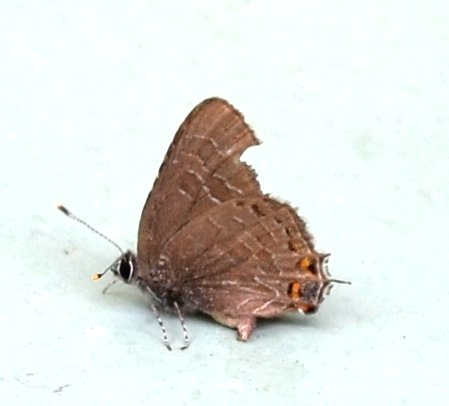
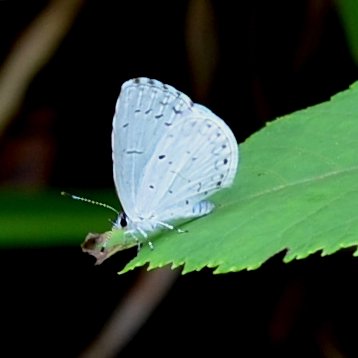
We now have a row or two of "mystery" creatures, ones that I was too insecure to put names to. This tiny white "thing" is probably the nymphal case of something. The next image is of something really interesting but unnamed. And the last one MAY be the larva of a green lacewing, but I can't be sure.
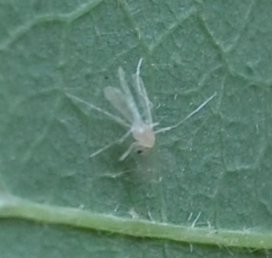
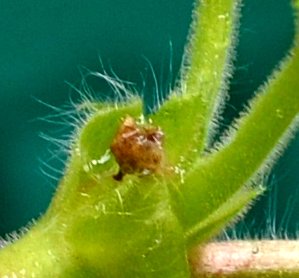
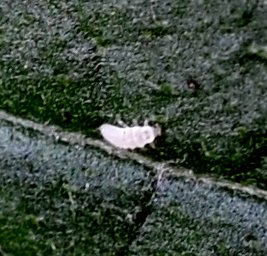
This pink fuzzy-looking thing may be a gall of some sort. It seems to be on thistle, which I haven't heard to have galls.
Next seems to be a dying spider of some kind. The penultimate one seems very organic, but who can tell what it is?
And the last one is yet another wooly creature and I'm not sure what the underlying insect is.
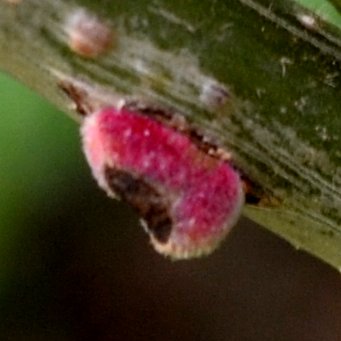
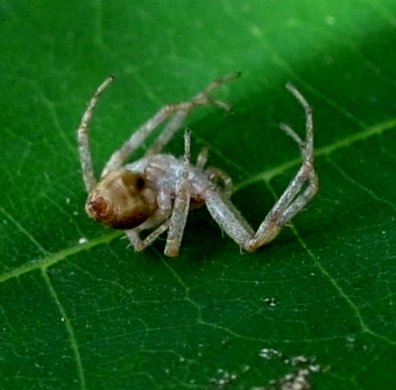
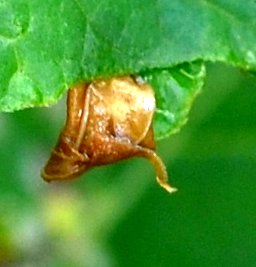
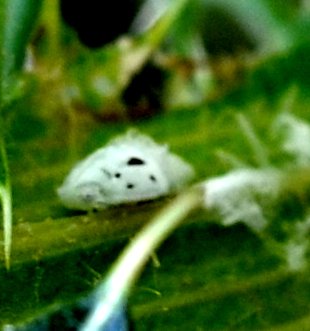
My head is spinning - let's trot out to where some of the more charming flowers and berries are hiding themselves. These tiny purple flowers signal the purple nightshade. Its berries are ripening into a shocking red color. Just to justify the name "purple", I wonder if you remember last fall when the leaves turn into patterns of yellow, green but dominated by purple tinges. For some weeks now, the pond has had beautiful lilies.
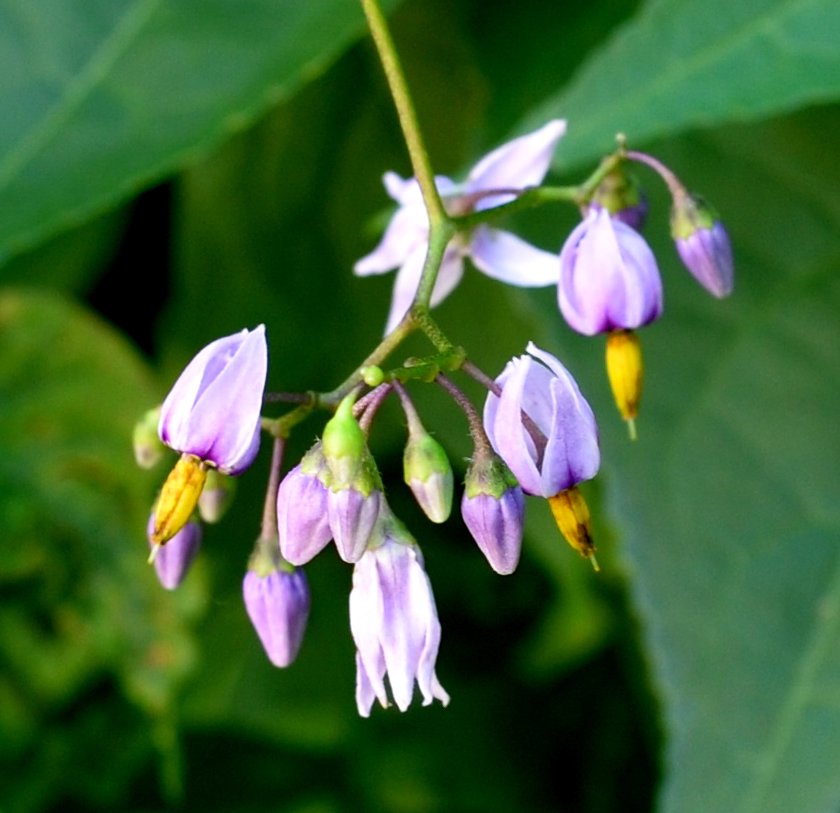
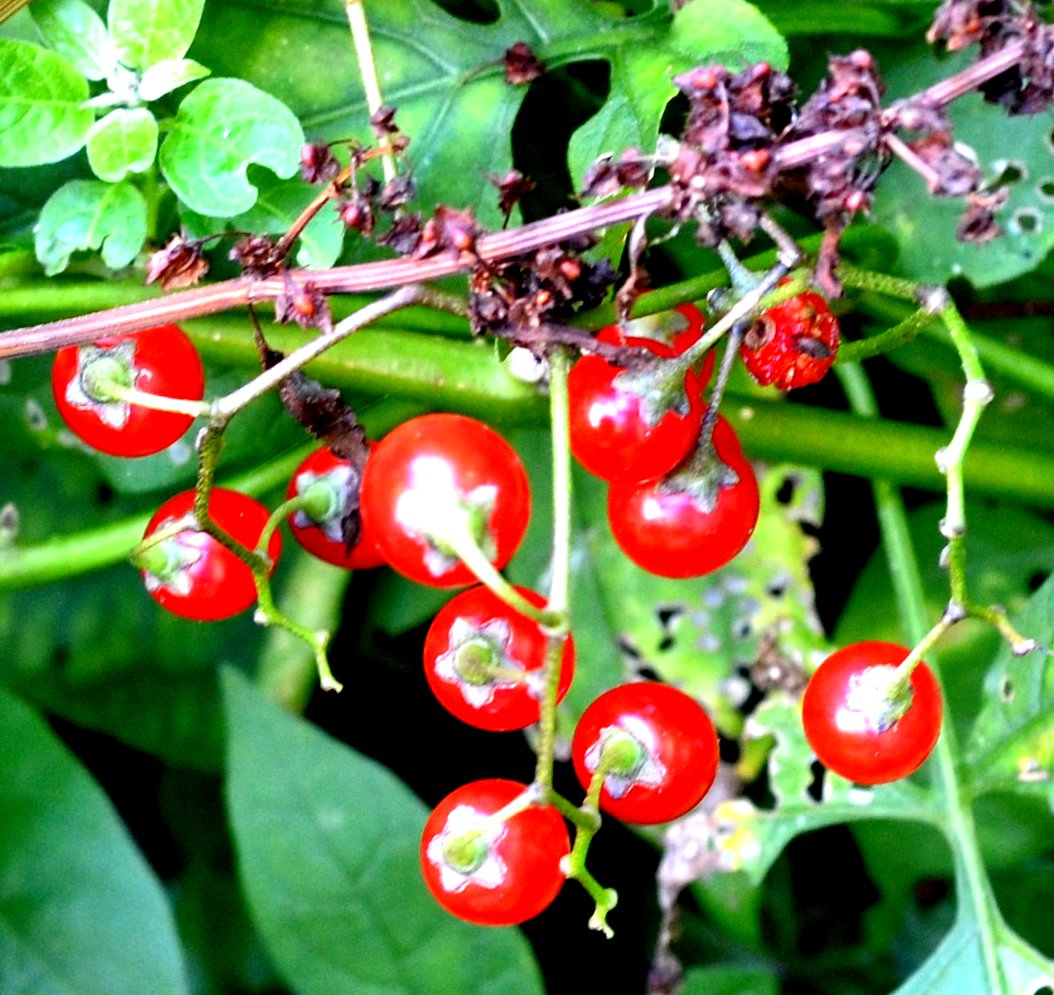

Do you remember our last week together when we spotted so many seeming kinds of orthopterans? We saw katydid babies and latydid later nymphs, and even the nymph of a two-spotted tree cricket. I even made a guess that what we saw was actually the adult. But this week the only orthopteran I saw was this little two-spotted ADULT! I wonder if the two spots are the two larger patches of scales on the back. It's easy to see what a more nearly adult katydid is - boy or girl - but apparently for crickets you have to flip them over. So here is a picture of the underside of our cricket. This one appears to have a long pointed needle-like ovipositor heading down from its midriff in the direction of the long legs. So I'm betting "girl". Oh- here is a photo of the pond with heavy rain coming down all over it. The next batch of images is of slugs and a snail which we mostly don't see if it hasn't rained.
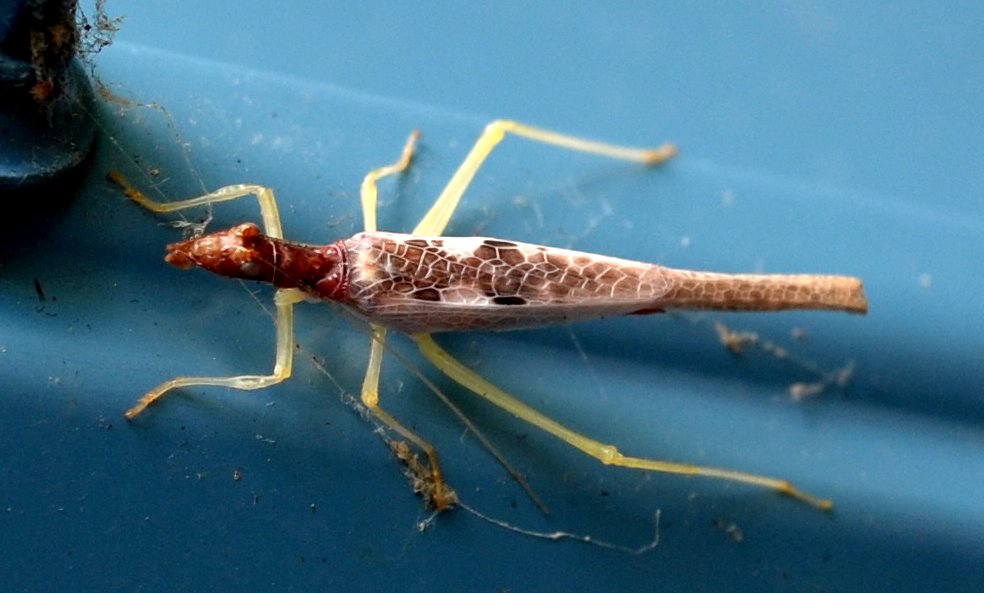
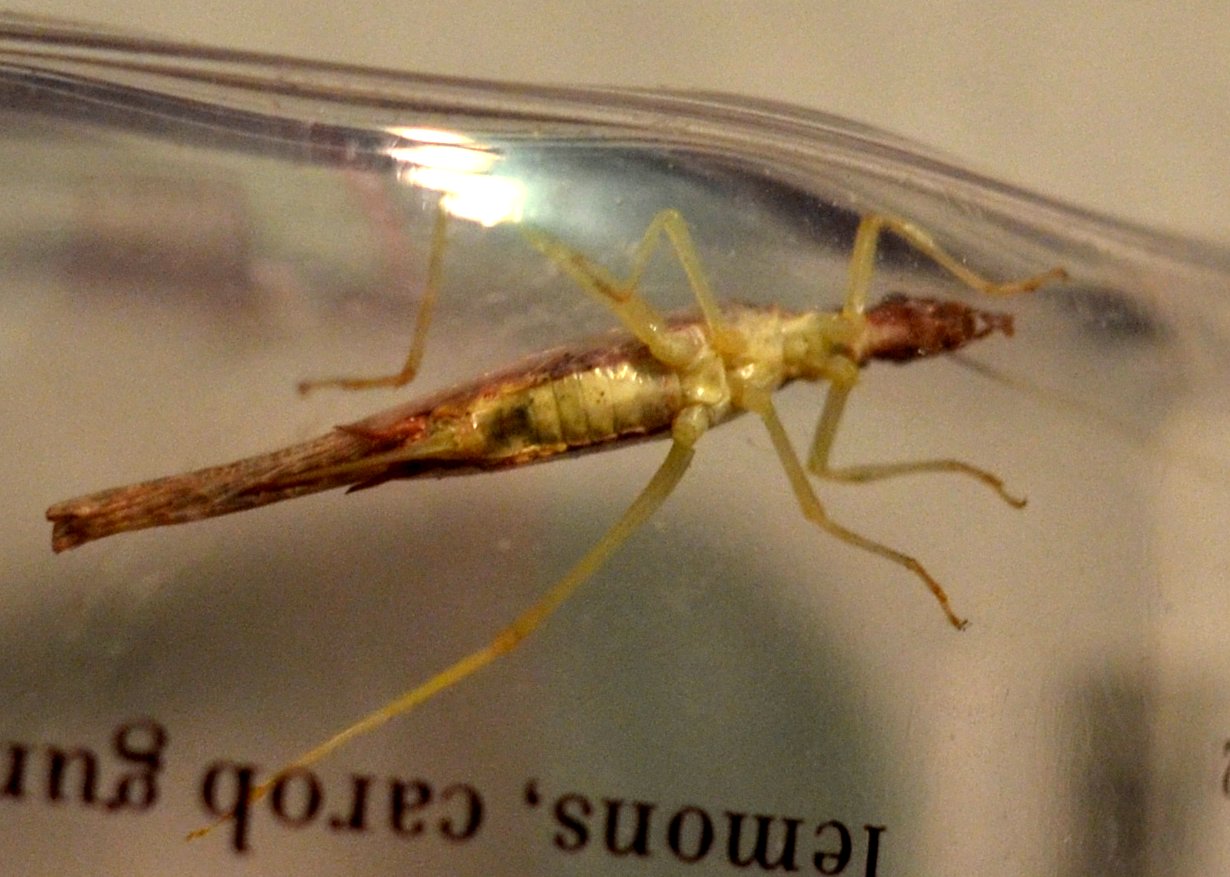
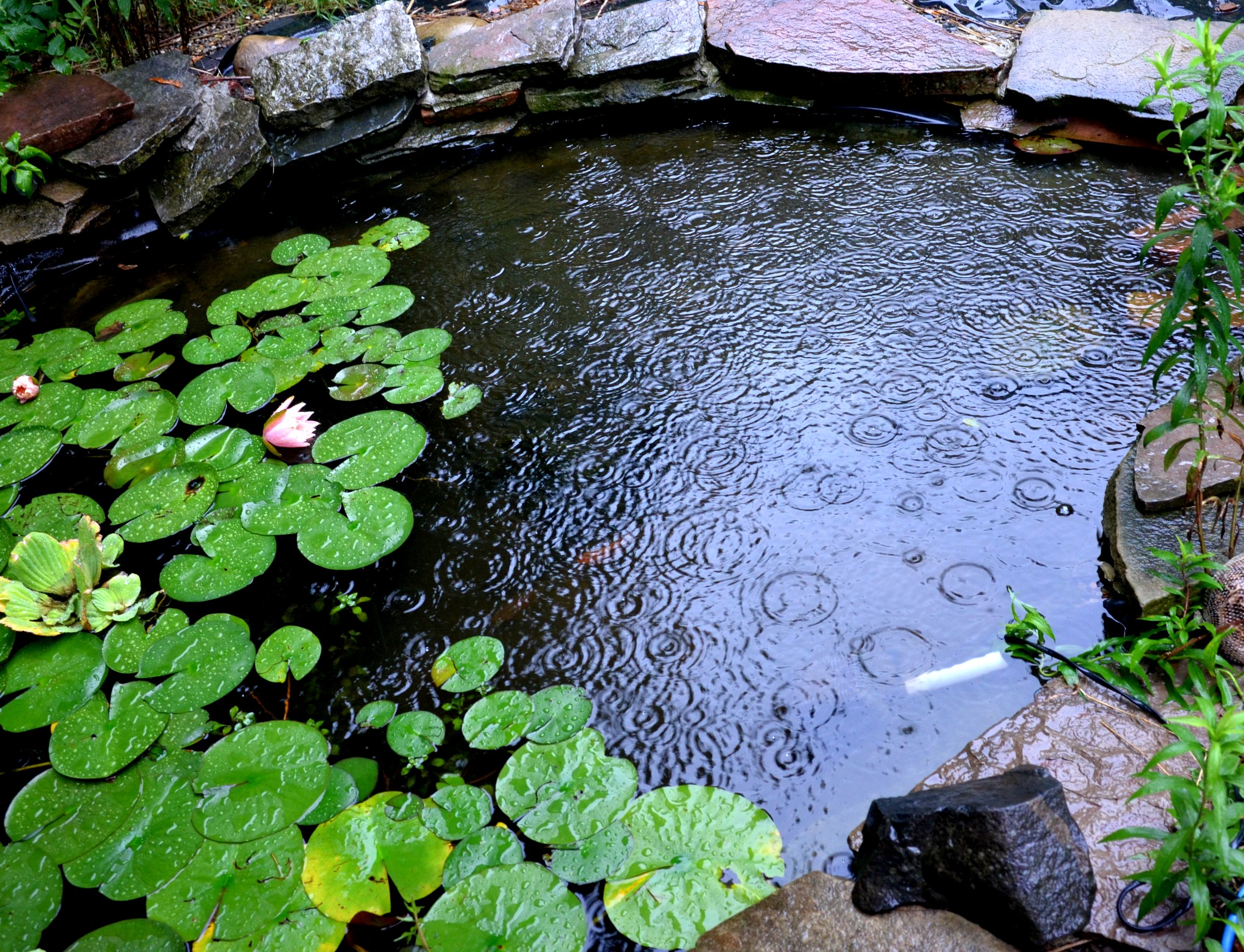
As promised, two slugs and a snail on a leaf, the result of the hour and a half rainy season. The snail is tiny and an interesting shape, while the slugs are each a couple of inches long.
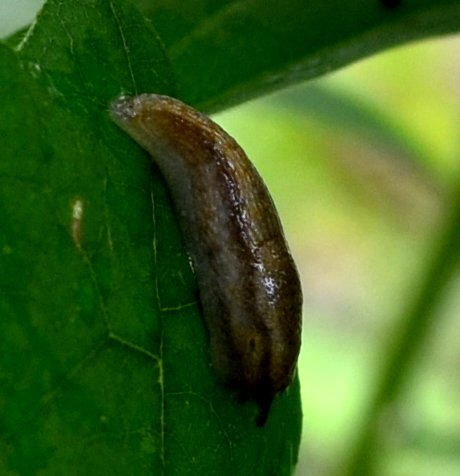
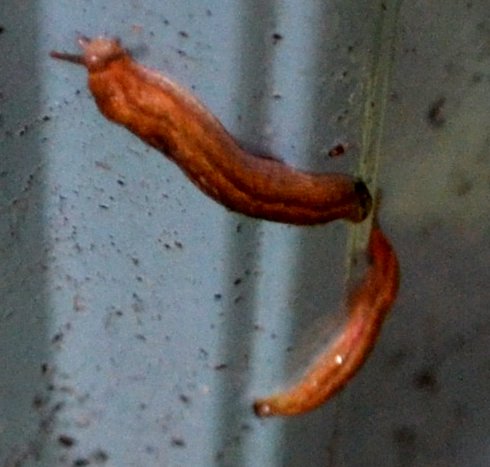
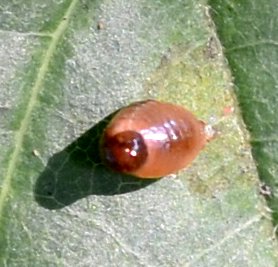
We only had one spider, and that is the very one that I had brought out from the kitchen. It had made a handsome orb web in the hibiscus plant. But the wasps made up for them. They were mostly too fast for me. But here we have one that I identified last year and a lovely little blue one,
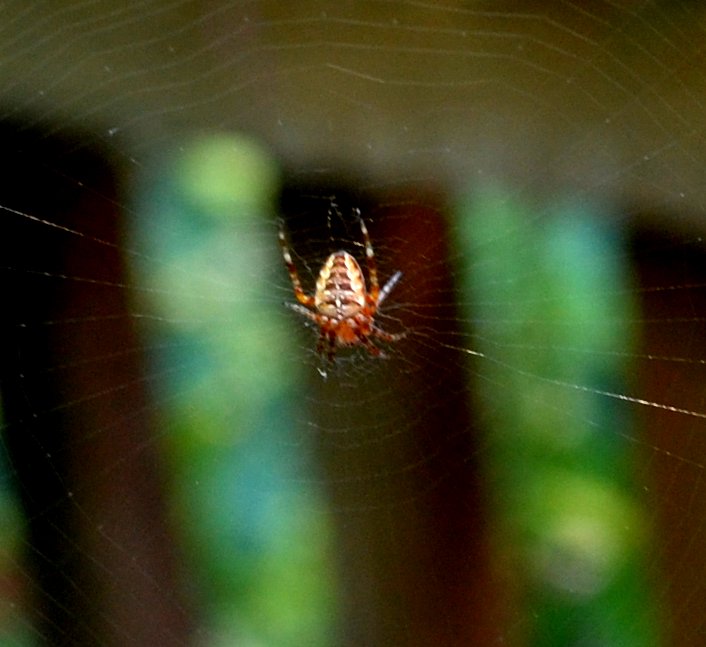
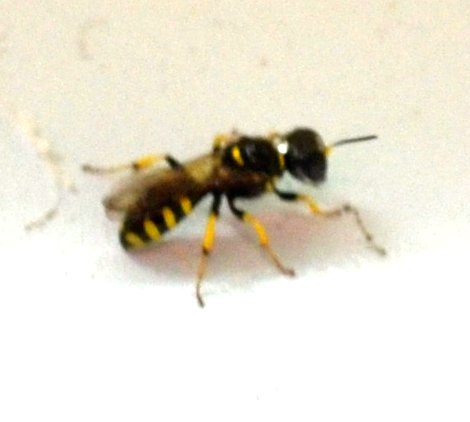
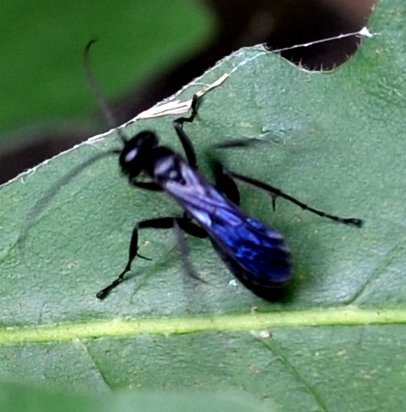
For sheer waspiness, we had a number of these yellowjackets, which I see to remember are German queens. The next one is one I only shot once last year - good thing -it is hard to identify. It is called a bee-like wasp, or apoid wasp. It is commonly called a bee wolf: Philanthus gibbosus. Third image: if you are very discreet about this, I'll tell you that these formerly southern wasps, huge things that stab a cicada up in a tree. This paralyzes it. The spider then tosses the offal: legs, wings, etc, and glides with the packaged cicada down to its nest in the ground. If you don't think global warming has come, listen to this. When I was a kid in Virginia, these cicada killers had made their nest at the base of every tree on my street. You knew not to walk near the heaped-up red Virginia soil that had been dug out under the tree. To imagine these monsters (at least two inches long) living up in what I used to think was the north is to be really angry at people who deny global warming. Here's one of the proofs!
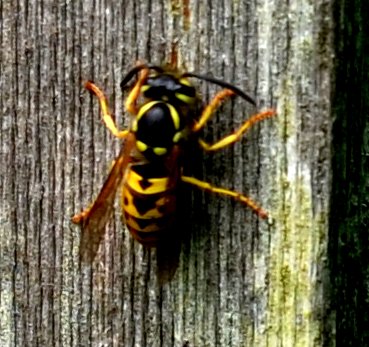
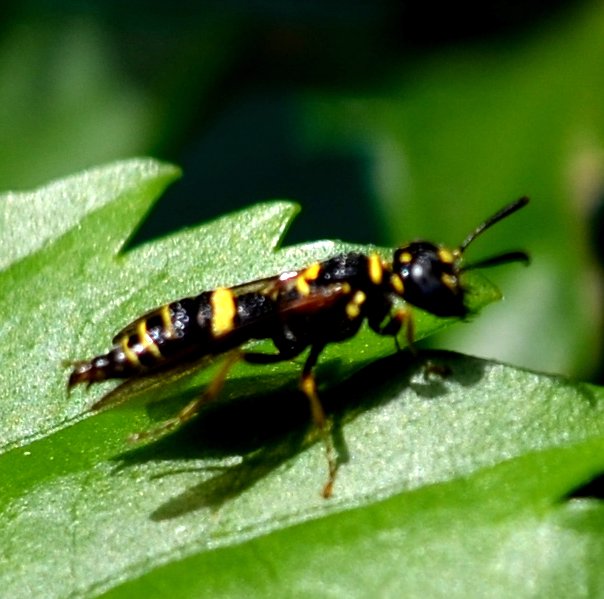
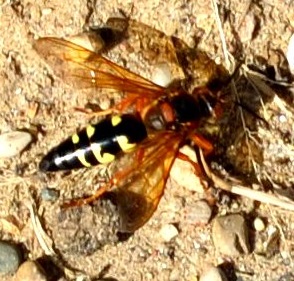
This is the one (of many) that got away. The most beautiful iridescent cobalt-colored wasp came to the trumpetvine for two days running, but never let me get within photographing range of it. But HERE is a picture of one of the many species of cuckoo wasps. If you do some googling, you will see many varieties and shades of blue-green.
Here are the backward and forward links. I hope everyone, everywhere, is having the best life possible. It's so rare to get a chance to say this to a lot of people at once, but I am so glad to have gotten to know you all and hope to see you again somewhere in a wonderful season.
Back to July 24
On to August 7
Back to 2016 menu
Back to main menu
copyright Martha O'Kennon 2016



















.jpg)


















































































